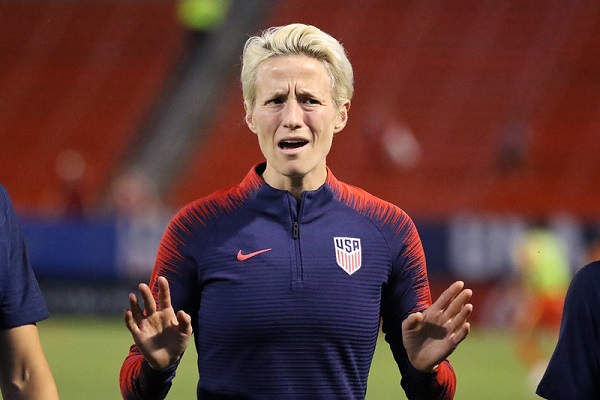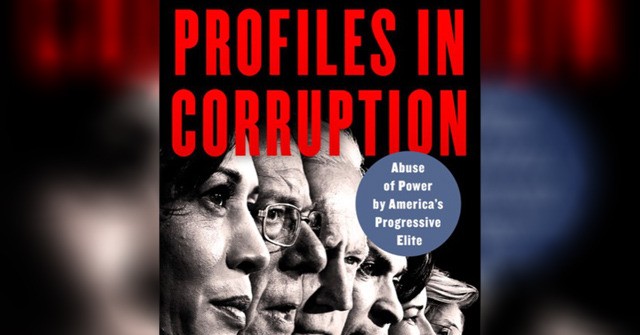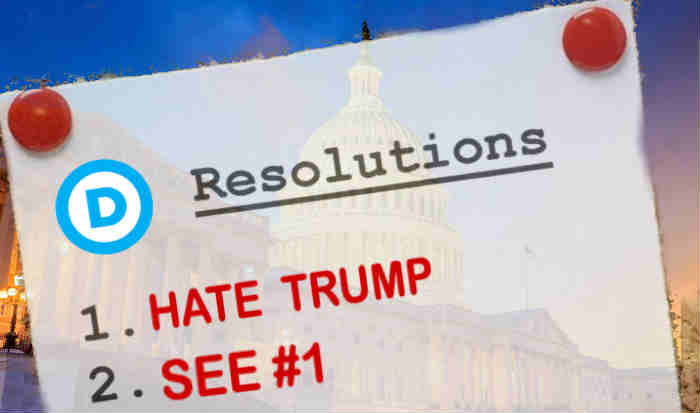In the 36 years before then-senator Barack Obama promised “Change We Can Believe In” during his 2008 presidential campaign, won the presidency, and made history by becoming America’s first black president, shootings at Historically Black Colleges and Universities (HBCUs) were infrequent and rare events. During that time, 13 shootings occurred at HBCUs, killing four students and injuring another 12 victims, 11 being students.
While change did occur during the Obama presidency, it wasn’t hopeful change we can (or even should) believe in. Empirical data of shootings at HBCUs, available at www.schoolshootingdatabase.com, have uncovered that during the eight years of the Obama administration, shootings at HBCUs surged 430% (in roughly 28 less years) to 56 shootings, with gunfire killing 12 and injuring 66 more. Ten of the 12 victims (83%) killed during the Obama presidency were students, as were 39 (59%) of the injured.
The chart below shows that during President Obama’s eight-year reign as commander-in-chief, gun deaths at HBCUs spiked 300%, and gun injuries went up by 550% from the previous 36 years.
Shootings at HBCUs Throughout the Years
|
Eras
|
Time Span
|
Number of Years
|
Number of Shootings
|
Number of Victims Killed
|
Number of Victims Injured
|
|
HBCU Shootings During Pre-Civil Rights Era
|
1918–1953
|
35
|
1
|
1
|
0
|
|
HBCU Protest Shootings During the Civil Rights Era
|
1954–1972
|
18
|
5
|
8
|
40
|
|
Post–Civil Rights Era (36 years before Obama Administration)
|
1973–1981
|
9
|
1
|
0
|
1
|
|
1982–1990
|
9
|
1
|
1
|
0
|
|
1991–1999
|
9
|
2
|
0
|
5
|
|
2000–2008*
|
9
|
9
|
3
|
6
|
|
Obama Administration
|
January 20, 2009 to Jan 19, 2017
|
8
|
56
|
12
|
66
|
|
Trump Administration
|
January 20, 2017 to Present Day
|
3
|
12
|
4
|
8
|
|
Totals
|
–
|
101
|
87
|
29
|
126
|
*During the Bush administration, eight shootings occurred, killing two and injuring six.
When comparing the Obama administration’s record on gun violence at HBCUs to that of its predecessor, the Bush administration, the numbers surge to a 700% increase. During the eight years of the Bush administration, eight shootings occurred at HBCUs, killing two and injuring six. Only eight months into President Obama’s first term in office, two students were shot and killed, and 19 others received gunshot injuries in eight shootings at HBCUs, eclipsing the eight shootings that happened during the entire two-term Bush presidency.
Even the racial tensions at HBCUs during the Civil Rights Era don’t compare to the devastation brought to HBCUs by the Obama presidency. HBCUs endured five high-profile racially motivated shootings by law enforcement during Civil Rights protests with eight people getting shot and killed, 40 receiving gunshot wounds, and scores more getting roughed up and injured in the race riots. It’s profoundly sad and ironic that the 56 shootings at HBCUs that occurred during the eight years of the Obama Administration are 11 times greater than the number of shootings that occurred at HBCUs in nearly 20 years of turbulent racial hatred of the Civil Rights Era.
Most of the shootings at HBCUs are incidents that arise from fights over petty grievances, involve gangs, or are crimes stemming from drugs or robberies. Rival gangs from Missouri City and Fresno, about 30 to 40 minutes away from Texas Southern University, were responsible for a drive-by shooting that occurred at TSU during a concert and community rally that “featured a voter registration drive, HIV testing and appearances by Houston rapper Trae the Truth” that injured eight people, ages 14 to 21, including one male TSU student.
With all the violence that HBCU students are constantly subjected to, students at the time, like 19-year-old freshman at TSU Daijsa Fowls, are left to ask, “How do you study and watch your back? Daijsa also said, “A bullet has no name. It can happen to anybody.” Another TSU student fearing for her safety, Kendra Horn, also voiced her concerns, stating, “It’s literally here in front of our faces. I can’t feel safe walking all the way to class; how am I supposed to focus in class without thinking I’m going to get shot?”
To better understand the depth of the plague of shootings at HBCUs during Obama’s tenure in the White House, the list below illustrates 34 shootings that occurred at 11 HBCUs while President Obama was in office. Sometimes the frequency of the shootings is a matter of years, months, weeks, or even days. It is also important to keep in mind that students also have to be concerned with shootings that happen just off campus and in the surrounding area, which occur even more frequently than on-campus shootings.
HBCUs With Multiple Shootings during Obama Administration
Langston University: 5 Shootings
August 16, 2009: 4 Injured
September 28, 2009: None Injured or Killed
October 14, 2010: 1 Injured
October 18, 2014: 1 Injured
October 15, 2015: None Injured or Killed
Lane College: 5 Shootings
September 16, 2011: 1 Injured
February 1, 2012: 1 Killed
September 17, 2013: None Injured or Killed
April 2, 2015: 1 Injured
December 18, 2015: None Injured or Killed
Texas Southern University: 4 Shootings
July 22, 2009: 8 Injured
August 26, 2015: 1 Killed, 1 Injured
October 6, 2015: 1 Injured
October 9, 2015: 1 Killed, 1 Injured
Elizabeth City State University: 4 Shootings
November 5, 2011: Assailant injured by law enforcement
April 11, 2013: None Injured or Killed
April 13, 2013: 1 Injured
October 8, 2014: None Injured or Killed
Savannah State University: 3 Shootings
September 21, 2013: 1 Killed
September 5, 2014: 1 Injured
August 27, 2015: 1 Killed
Tennessee State University: 3 Shootings
May 18, 2009: 1 Killed, 1 Injured
January 28, 2014: 1 Injured
October 22, 2015: 1 Killed, 3 Injured
Morgan State University: 2 Shootings
September 12, 2012: 1 Injured
November 3, 2012: 1 Injured
Bethune-Cookman University: 2 Shootings
February 23, 2015: 1 Injured
March 29, 2015: 1 Injured
Paine College: 2 Shootings
May 4, 2015: 1 Injured
May 5, 2015: 1 Injured
Delaware State University: 2 Shootings
February 13, 2009: 2 Injured
April 13, 2015: 3 Injured
Grambling State University: *2 Shootings
April 16, 2013: 3 Injured
*January 28, 2015
*alleged shooting — “The Gramblinite, the student newspaper of Grambling State University, tweeted that the university was on lockdown due to an allege(d) campus shooting.”
Gun violence wasn’t the only destructive force HBCUs suffered through under the navigation of President Obama. Devastating budget cuts and low enrollment also hindered the prosperity of HBCUs while President Obama was in office. Even though the Bush administration had designated $85 million for HBCUs, within months of becoming commander-in chief, President Obama decided not to renew the “$85 million pot of money earmarked for HBCUs by his Republican predecessor.” Obama’s failure to financially support HBCUs also led economist Julianne Malveaux, who was the president of Bennett College in North Carolina at the time to ask, “Why is it that a recalcitrant Bush would do more for HBCUs than an ostensibly sympathetic Obama would?”
From 2000 to 2008, HBCUs “received on average 3.5 percent of federal money going to institutions of higher education,” but by 2013, even as the overall federal higher education budget grew, the HBCU share was down to 2.8 percent, according to the Thurgood Marshall College Fund, which lobbies for black colleges and supports students with scholarships.” In February 2015, Hampton University president William Harvey attended a meeting of the White House’s advisory board and “delivered some blunt criticism” of the Obama administration’s poor treatment of HBCUs. Harvey, who is the advisory board chair, said, “We are not consulted when it comes to policy changes and decisions impacting — in a major way — the institutions on whose behalf we are to advocate. Overall support to black colleges is down.”
After HBCUs were forsaken by the Obama administration for eight years, the former Thurgood Marshall College Fund president and CEO, Johnny C. Taylor, pointed out the difference between the Obama and Trump administrations. After President Trump signed an executive order titled “The Presidential Executive Order on the White House Initiative to Promote Excellence and Innovation at Historically Black Colleges and Universities” in just 45 days once he took office in 2017, Taylor explained that President Trump’s actions were “something that, frankly, the black college community assumed would have been easily accomplished with the first African-American president, and after over eight years of repeated requests, to think that within 45 days of his presidency we were able to convene all of the [HBCU] presidents in the Oval Office [Monday] and [on Tuesday] a subset of us were able to come back and sign the executive order the same day that the [president] is preparing for first State of the Union address. [That] gives this tremendous importance. It’s bittersweet, but at the end of the day, we focus on the sweet.”
As 2019 comes to an end, President Trump also signed the FUTURE Act, which is a “bipartisan amendment to a bill that would permanently re-authorize millions of dollars in federal funding to historically black colleges and universities (HBCUs) and other minority-serving institutions (MSIs) for a decade.”
How did the Obama administration honestly hope to effect real positive change for HBCUs without addressing the skyrocketing gun violence during its two terms in office and by slashing their already strapped budgets? After the Sandy Hook tragedy, President Obama could be seen wiping away a single tear in a press conference as he predictably pushed for the agenda of gun control. How come President Obama didn’t hold a press conference or shed any tears for any of the HBCU victims and their families as an epidemic of shootings at HBCUs surged under his leadership? Were tears not appropriate for the 12 people killed and 66 others who received gunshot wounds under the neglect of President Obama’s tenure?
Ironically, President Obama’s idea of “Hope and Change” increased shootings at HBCUs by seven times and put black American students at risk of being killed threefold and 11 times more likely to be injured from gun violence under his leadership compared to the previous eight years of the Bush administration. What does President Obama leaving behind a legacy of neglect, less money, and more violence for HBCUs, a cornerstone of the black community, say about America’s first black president? President Obama’s tattered legacy of dereliction, financial neglect, and escalating violence for HBCUs has proved that the Trump administration is the real driving force for actual “Hope and Change” at HBCUs, as opposed to the never-ending line of empty and broken promises of the Obama administration.
Image: Ari Levinson via Wikimedia Commons.
In the 36 years before then-senator Barack Obama promised “Change We Can Believe In” during his 2008 presidential campaign, won the presidency, and made history by becoming America’s first black president, shootings at Historically Black Colleges and Universities (HBCUs) were infrequent and rare events. During that time, 13 shootings occurred at HBCUs, killing four students and injuring another 12 victims, 11 being students.
While change did occur during the Obama presidency, it wasn’t hopeful change we can (or even should) believe in. Empirical data of shootings at HBCUs, available at www.schoolshootingdatabase.com, have uncovered that during the eight years of the Obama administration, shootings at HBCUs surged 430% (in roughly 28 less years) to 56 shootings, with gunfire killing 12 and injuring 66 more. Ten of the 12 victims (83%) killed during the Obama presidency were students, as were 39 (59%) of the injured.
The chart below shows that during President Obama’s eight-year reign as commander-in-chief, gun deaths at HBCUs spiked 300%, and gun injuries went up by 550% from the previous 36 years.
Shootings at HBCUs Throughout the Years
|
Eras
|
Time Span
|
Number of Years
|
Number of Shootings
|
Number of Victims Killed
|
Number of Victims Injured
|
|
HBCU Shootings During Pre-Civil Rights Era
|
1918–1953
|
35
|
1
|
1
|
0
|
|
HBCU Protest Shootings During the Civil Rights Era
|
1954–1972
|
18
|
5
|
8
|
40
|
|
Post–Civil Rights Era (36 years before Obama Administration)
|
1973–1981
|
9
|
1
|
0
|
1
|
|
1982–1990
|
9
|
1
|
1
|
0
|
|
1991–1999
|
9
|
2
|
0
|
5
|
|
2000–2008*
|
9
|
9
|
3
|
6
|
|
Obama Administration
|
January 20, 2009 to Jan 19, 2017
|
8
|
56
|
12
|
66
|
|
Trump Administration
|
January 20, 2017 to Present Day
|
3
|
12
|
4
|
8
|
|
Totals
|
–
|
101
|
87
|
29
|
126
|
*During the Bush administration, eight shootings occurred, killing two and injuring six.
When comparing the Obama administration’s record on gun violence at HBCUs to that of its predecessor, the Bush administration, the numbers surge to a 700% increase. During the eight years of the Bush administration, eight shootings occurred at HBCUs, killing two and injuring six. Only eight months into President Obama’s first term in office, two students were shot and killed, and 19 others received gunshot injuries in eight shootings at HBCUs, eclipsing the eight shootings that happened during the entire two-term Bush presidency.
Even the racial tensions at HBCUs during the Civil Rights Era don’t compare to the devastation brought to HBCUs by the Obama presidency. HBCUs endured five high-profile racially motivated shootings by law enforcement during Civil Rights protests with eight people getting shot and killed, 40 receiving gunshot wounds, and scores more getting roughed up and injured in the race riots. It’s profoundly sad and ironic that the 56 shootings at HBCUs that occurred during the eight years of the Obama Administration are 11 times greater than the number of shootings that occurred at HBCUs in nearly 20 years of turbulent racial hatred of the Civil Rights Era.
Most of the shootings at HBCUs are incidents that arise from fights over petty grievances, involve gangs, or are crimes stemming from drugs or robberies. Rival gangs from Missouri City and Fresno, about 30 to 40 minutes away from Texas Southern University, were responsible for a drive-by shooting that occurred at TSU during a concert and community rally that “featured a voter registration drive, HIV testing and appearances by Houston rapper Trae the Truth” that injured eight people, ages 14 to 21, including one male TSU student.
With all the violence that HBCU students are constantly subjected to, students at the time, like 19-year-old freshman at TSU Daijsa Fowls, are left to ask, “How do you study and watch your back? Daijsa also said, “A bullet has no name. It can happen to anybody.” Another TSU student fearing for her safety, Kendra Horn, also voiced her concerns, stating, “It’s literally here in front of our faces. I can’t feel safe walking all the way to class; how am I supposed to focus in class without thinking I’m going to get shot?”
To better understand the depth of the plague of shootings at HBCUs during Obama’s tenure in the White House, the list below illustrates 34 shootings that occurred at 11 HBCUs while President Obama was in office. Sometimes the frequency of the shootings is a matter of years, months, weeks, or even days. It is also important to keep in mind that students also have to be concerned with shootings that happen just off campus and in the surrounding area, which occur even more frequently than on-campus shootings.
HBCUs With Multiple Shootings during Obama Administration
Langston University: 5 Shootings
August 16, 2009: 4 Injured
September 28, 2009: None Injured or Killed
October 14, 2010: 1 Injured
October 18, 2014: 1 Injured
October 15, 2015: None Injured or Killed
Lane College: 5 Shootings
September 16, 2011: 1 Injured
February 1, 2012: 1 Killed
September 17, 2013: None Injured or Killed
April 2, 2015: 1 Injured
December 18, 2015: None Injured or Killed
Texas Southern University: 4 Shootings
July 22, 2009: 8 Injured
August 26, 2015: 1 Killed, 1 Injured
October 6, 2015: 1 Injured
October 9, 2015: 1 Killed, 1 Injured
Elizabeth City State University: 4 Shootings
November 5, 2011: Assailant injured by law enforcement
April 11, 2013: None Injured or Killed
April 13, 2013: 1 Injured
October 8, 2014: None Injured or Killed
Savannah State University: 3 Shootings
September 21, 2013: 1 Killed
September 5, 2014: 1 Injured
August 27, 2015: 1 Killed
Tennessee State University: 3 Shootings
May 18, 2009: 1 Killed, 1 Injured
January 28, 2014: 1 Injured
October 22, 2015: 1 Killed, 3 Injured
Morgan State University: 2 Shootings
September 12, 2012: 1 Injured
November 3, 2012: 1 Injured
Bethune-Cookman University: 2 Shootings
February 23, 2015: 1 Injured
March 29, 2015: 1 Injured
Paine College: 2 Shootings
May 4, 2015: 1 Injured
May 5, 2015: 1 Injured
Delaware State University: 2 Shootings
February 13, 2009: 2 Injured
April 13, 2015: 3 Injured
Grambling State University: *2 Shootings
April 16, 2013: 3 Injured
*January 28, 2015
*alleged shooting — “The Gramblinite, the student newspaper of Grambling State University, tweeted that the university was on lockdown due to an allege(d) campus shooting.”
Gun violence wasn’t the only destructive force HBCUs suffered through under the navigation of President Obama. Devastating budget cuts and low enrollment also hindered the prosperity of HBCUs while President Obama was in office. Even though the Bush administration had designated $85 million for HBCUs, within months of becoming commander-in chief, President Obama decided not to renew the “$85 million pot of money earmarked for HBCUs by his Republican predecessor.” Obama’s failure to financially support HBCUs also led economist Julianne Malveaux, who was the president of Bennett College in North Carolina at the time to ask, “Why is it that a recalcitrant Bush would do more for HBCUs than an ostensibly sympathetic Obama would?”
From 2000 to 2008, HBCUs “received on average 3.5 percent of federal money going to institutions of higher education,” but by 2013, even as the overall federal higher education budget grew, the HBCU share was down to 2.8 percent, according to the Thurgood Marshall College Fund, which lobbies for black colleges and supports students with scholarships.” In February 2015, Hampton University president William Harvey attended a meeting of the White House’s advisory board and “delivered some blunt criticism” of the Obama administration’s poor treatment of HBCUs. Harvey, who is the advisory board chair, said, “We are not consulted when it comes to policy changes and decisions impacting — in a major way — the institutions on whose behalf we are to advocate. Overall support to black colleges is down.”
After HBCUs were forsaken by the Obama administration for eight years, the former Thurgood Marshall College Fund president and CEO, Johnny C. Taylor, pointed out the difference between the Obama and Trump administrations. After President Trump signed an executive order titled “The Presidential Executive Order on the White House Initiative to Promote Excellence and Innovation at Historically Black Colleges and Universities” in just 45 days once he took office in 2017, Taylor explained that President Trump’s actions were “something that, frankly, the black college community assumed would have been easily accomplished with the first African-American president, and after over eight years of repeated requests, to think that within 45 days of his presidency we were able to convene all of the [HBCU] presidents in the Oval Office [Monday] and [on Tuesday] a subset of us were able to come back and sign the executive order the same day that the [president] is preparing for first State of the Union address. [That] gives this tremendous importance. It’s bittersweet, but at the end of the day, we focus on the sweet.”
As 2019 comes to an end, President Trump also signed the FUTURE Act, which is a “bipartisan amendment to a bill that would permanently re-authorize millions of dollars in federal funding to historically black colleges and universities (HBCUs) and other minority-serving institutions (MSIs) for a decade.”
How did the Obama administration honestly hope to effect real positive change for HBCUs without addressing the skyrocketing gun violence during its two terms in office and by slashing their already strapped budgets? After the Sandy Hook tragedy, President Obama could be seen wiping away a single tear in a press conference as he predictably pushed for the agenda of gun control. How come President Obama didn’t hold a press conference or shed any tears for any of the HBCU victims and their families as an epidemic of shootings at HBCUs surged under his leadership? Were tears not appropriate for the 12 people killed and 66 others who received gunshot wounds under the neglect of President Obama’s tenure?
Ironically, President Obama’s idea of “Hope and Change” increased shootings at HBCUs by seven times and put black American students at risk of being killed threefold and 11 times more likely to be injured from gun violence under his leadership compared to the previous eight years of the Bush administration. What does President Obama leaving behind a legacy of neglect, less money, and more violence for HBCUs, a cornerstone of the black community, say about America’s first black president? President Obama’s tattered legacy of dereliction, financial neglect, and escalating violence for HBCUs has proved that the Trump administration is the real driving force for actual “Hope and Change” at HBCUs, as opposed to the never-ending line of empty and broken promises of the Obama administration.
Image: Ari Levinson via Wikimedia Commons.

















 Over the past year, Democrat leaders had increasingly revealed their true colors as they pursued a political strategy of “Kill the King” through their variations on the theme. However, in the grand scheme of their nefarious plans, the stage by stage escalation of the premeditated coup d’é·tat against our Constitutional Republic may be entering its final stages. After all, the election year is now upon us, and the likely hope of the Democrat leaders was that the impeachment fever they suffer from would have infected the entire population by now. But, since that has not happened, why would anyone expect crazed Democrat leaders to give up now? In fact, a new manifestation of hatred toward President Trump leaped out of numerous Democrat leaders after the drone strike against Iranian terrorist General Soleimani earlier this month.
Over the past year, Democrat leaders had increasingly revealed their true colors as they pursued a political strategy of “Kill the King” through their variations on the theme. However, in the grand scheme of their nefarious plans, the stage by stage escalation of the premeditated coup d’é·tat against our Constitutional Republic may be entering its final stages. After all, the election year is now upon us, and the likely hope of the Democrat leaders was that the impeachment fever they suffer from would have infected the entire population by now. But, since that has not happened, why would anyone expect crazed Democrat leaders to give up now? In fact, a new manifestation of hatred toward President Trump leaped out of numerous Democrat leaders after the drone strike against Iranian terrorist General Soleimani earlier this month.
